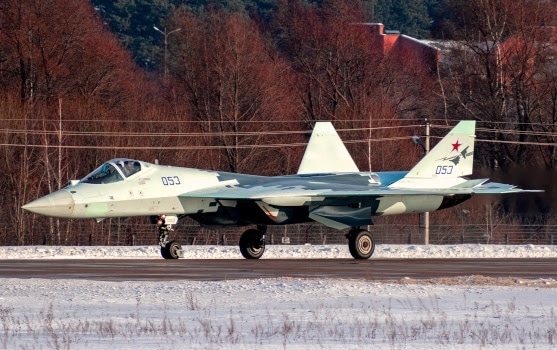The Russian authorities announced at the beginning of August that the Su-70 Okhotnik heavy combat drone from the Sukhoi firm carried out his first flight lasting 20 minutes, in accordance with the development schedule.
Unlike the West, Russia has decided to develop a combat drone by mainly integrating existing technological bricks, without going through demonstrator programs. In addition, the Okhotnik was designed and sized to adapt directly to the needs and specificities of the Russian air forces, with a range exceeding 3000 km, and a significant carrying capacity in terms of ammunition and reconnaissance equipment, allowing it to integrate existing Russian aerial devices. As the Su-70 is designed to evolve in concert with the Su-57 and PAK DA currently under development, it is likely that its entry into service will not occur before the second half of the coming decade.
It appears more and more that the paradigms chosen by Russia for the design of the Okhotnik are the polar opposites of those currently used by the United States and the Europeans for combat drones. The Okhotnik is a very imposing drone, with a take-off weight reaching 20 tonnes, or 3 tonnes more than that of an F16 block 70, a mass much lower than those planned for the American Loyal Wingman, or the Remote Carriers of the FCAS program. But where the priority mission of Western UCAVs will be the elimination of opposing anti-aircraft defense systems, with a high risk of attrition, that of the Okhotnik will probably be, given its format, to carry out deep strikes. on the enemy's posture, including its naval posture.

In addition, we see that Russia has definitively turned its back on the development of defense equipment that “mirrors” the West, and more particularly the United States, as was the case during the Cold War. On the contrary, Russia, and to a lesser extent, China, are now developing systems providing marked asymmetric advantages, so as to compensate for American and Western economic and digital power. Thus, the T14, Su-57, S500, the Kinjhal and Tzirkon hypersonic missiles, or the Stratus-6 Poseidon strategic torpedoes, are all designed to neutralize US power, or exploit its weaknesses, in a strategy from the weak to the strong. If the performance of these new systems meets the expectations of the Russian military authorities, the country could well succeed in its challenge of being able to stand up to the United States, a country that is twice as populated and 11 times richer.
